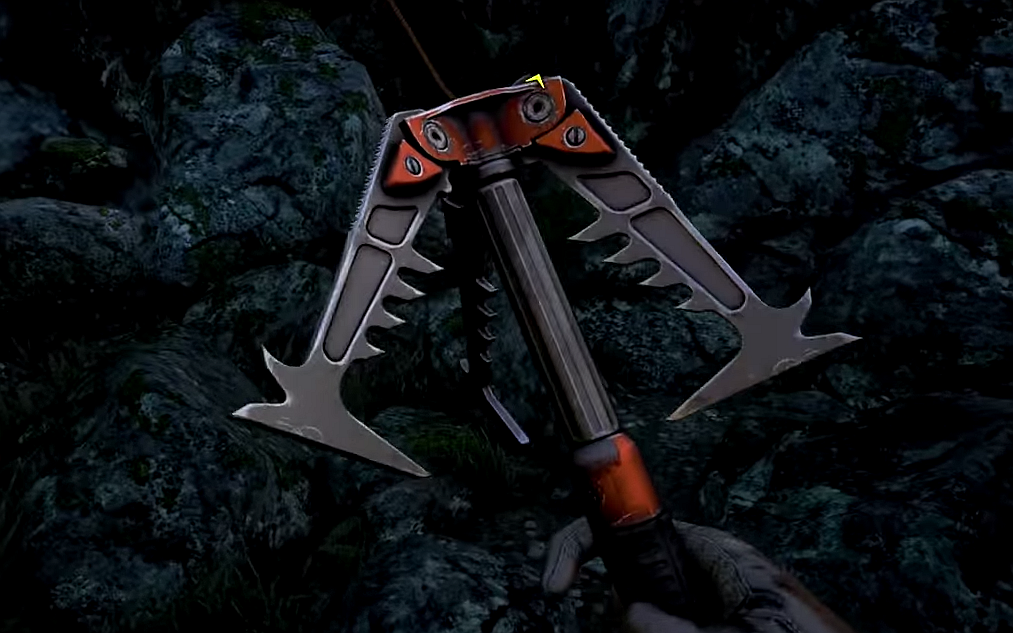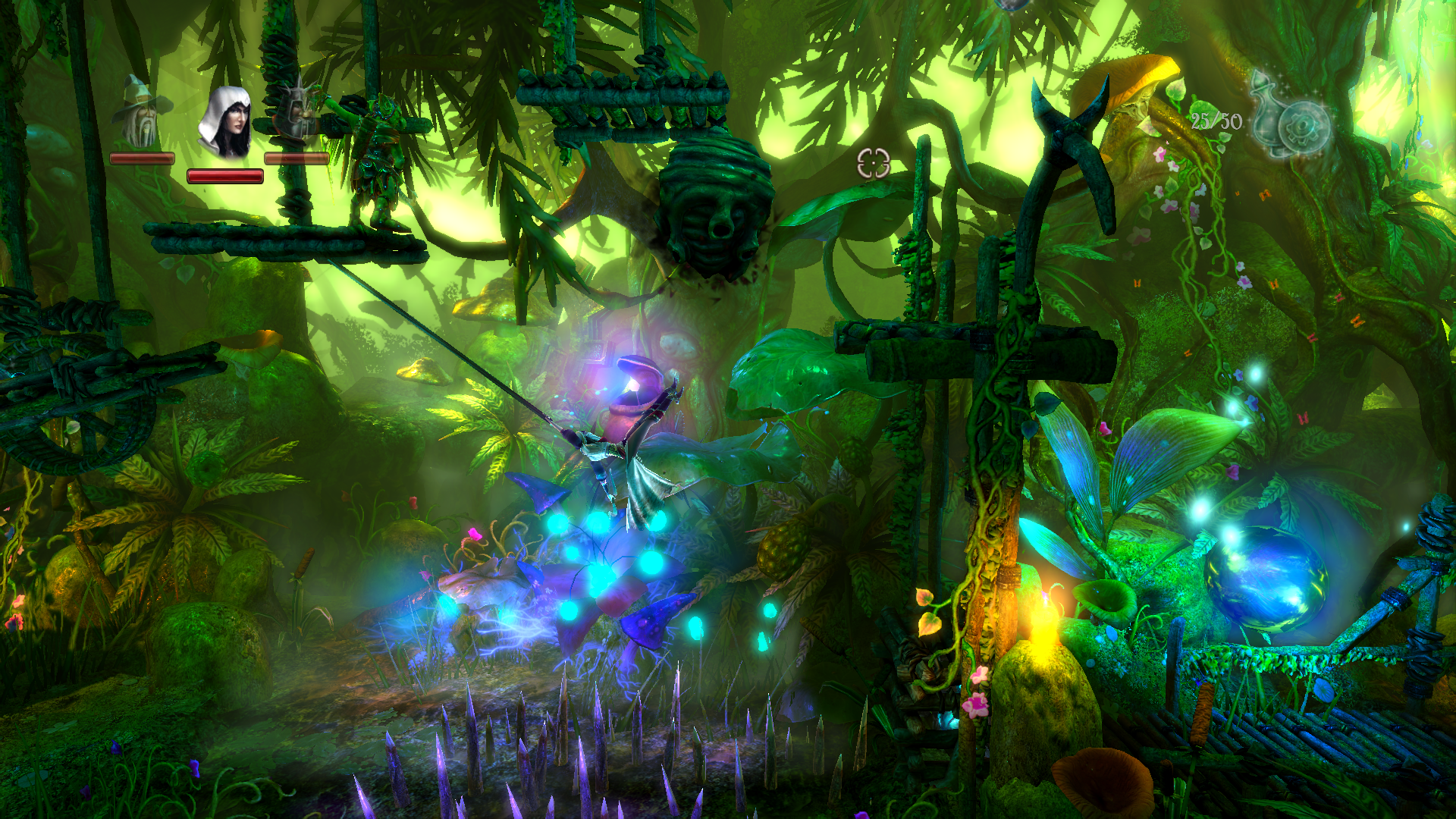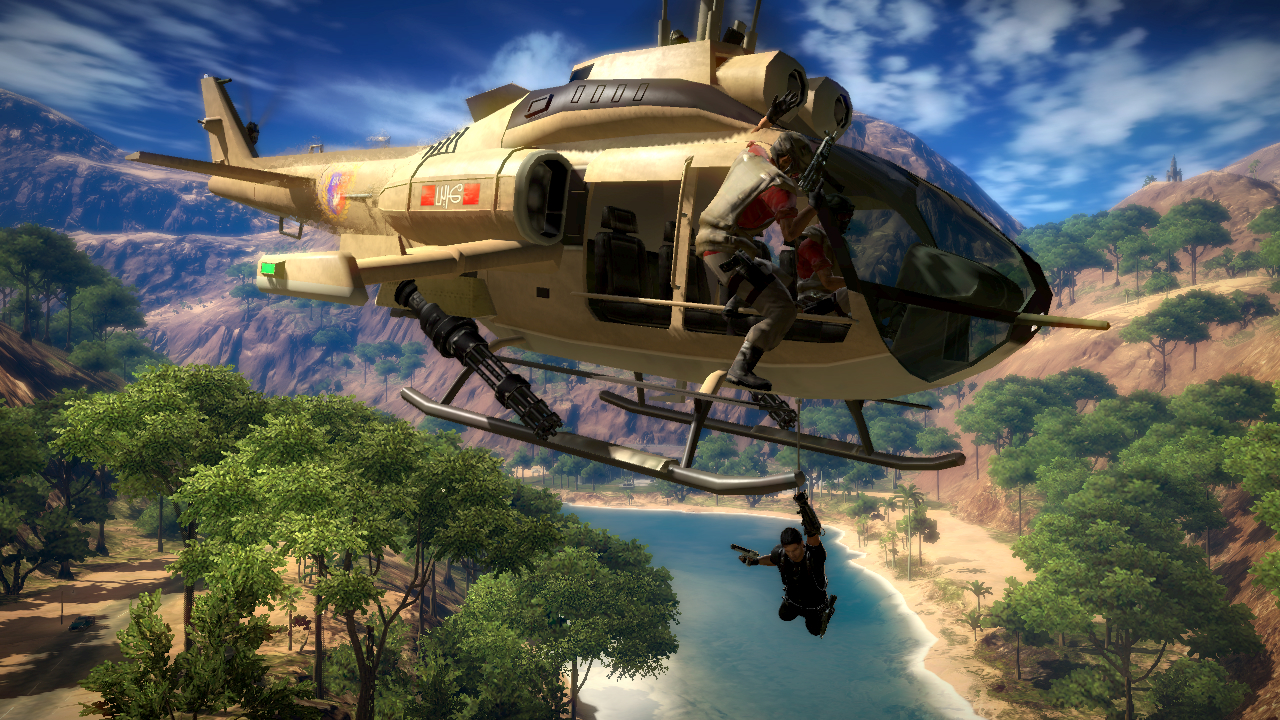Why I Love: the grappling hook
We get into the swing of things, as Phil explains his love of grappling hooks.

In Why I Love, PC Gamer writers pick an aspect of PC gaming that they love and write about why it's brilliant. Today, we get into the swing, as Phil explains his love of grappling hooks.
If you go back through the Why I Love articles I've written to date—stealth on ships, TF2's Scout or playing Chinese-style opera in Audiosurf—all have, to a greater or lesser extent, been about systems or experiences that change how you traverse through a level. The Scout can double-jump. Ship-based stealth levels are tighter and more claustrophobic than their inevitable "big warehouse" counterpart. Monkey Bee has one of the most distinct middle-sections I've yet to see emerge from Audiosurf's level generator.
A satisfying traversal system isn't the only thing I look for in a game, but it is one of a few broad areas that define my taste. If I can move around a game in interesting ways, then I will probably like it. I like Prototype—a game in which you can run up, and leap off, and glide over buildings—even though a part of me suspects that it's really a bit rubbish. I'm a somewhat overweight guy in his thirties. Sometimes it's nice to tell gravity to go and do one.

There's another traversal tool that I consistently love in games: the grappling hook. My appreciation for good grappling hooks—and good here doesn't mean realistic—started with the original version of Worms. Friends and I would play multiplayer matches with a very specific set of rules: no turn timer, unlimited girders, and unrestricted access to the grappling hook (or "ninja rope," as it's called in-game). You can use the ninja rope multiple times per turn, and we gave ourselves unlimited time to make our way across the map. With these rules, a worm can travel from one side to the other—their turn ending only if they take fall damage.
That's where the girders came in. We'd place them above the level, both to protect our own guys from air strikes and to have more surfaces to grapple on to. Worms' rope mechanics are, in essence, bizarre. They're also consistent in their implementation, which led us to a great understanding of their potential. With some effort, it's possible to swing 180 degrees and beyond—eventually landing on top of the platform the worm is swinging from. The trick is to extend the rope fully, smack into a solid surface, and then retract. That maximises the speed boost from bouncing off the wall, and, with luck, propels the worm up and around.
To anyone but those directly involved in the match, this was an unspeakably tedious spectacle. To us, it was thrilling.

Subsequent Worms games enforced turn times, essentially ruining my enjoyment of them. But a few other 2D games feature that same spirit of exploitable traversal. Trine is, intentionally or not, all about this. One of its three characters is a thief, and her grappling hook allows for a similarly awkward battle against physics. Here, you can even grapple onto one surface, break off, and re-attach to another, all while still in mid-swing. You can, on select levels, chain these swings—at times resulting in long, unbroken stretches of undulation.
Used properly, it can be a graceful tool. But both Trine games also contain a secret hidden minigame for grappling hook aficionados. This game is called "can I use the thief to complete this section, even though it was obviously designed for the wizard?" Often, the answer is yes.
The biggest gaming news, reviews and hardware deals
Keep up to date with the most important stories and the best deals, as picked by the PC Gamer team.
At this point, I should probably point to another 2D grappling hook game—one designed entirely around swinging as the main method of level traversal. It's called Floating Point, it's free, and it was made by PC Gamer's former section editor Tom Francis. It's a more sedate grapple-space to move through, and rare in that its freedom of movement is the idea rather than an exploitable quirk in the engine. If you're here because you like grappling hooks, then it's relevant to your interests.
In three dimensions, the grappling hook is a less sure-fire hit. Too often, it's restricted—kept to specific grapple-points in order to stop the player breaking the level in ridiculous ways. You can see this in Far Cry 4. You have a grappling hook! You can jump from the rope and re-attach it to another point before hitting the ground! You can only do this at specifically marked points around the map. I'd like you to imagine a sort of anti-exclamation mark, and place it on the end of that last sentence.

Some games are better at it this than others, and they tend to be the ones that are more open about their freedom of movement. Arkham City's grapnel gun combos satisfyingly with the glide. You can't swing, but you can shoot it to build speed across the map—using it to all but fly. And then there's Just Cause 2, or Let's Do Fun Shit With a Grappling Hook: The Game. You can attach it to a plane, or to cars, or to an explosive barrel that is shooting vertically into the air. You can use it in conjunction with a parachute to create a free-form system of movement more distinct and enjoyable than any of the game's vehicles.
Maybe that's another reason why grappling hooks, specifically, are one of my favourite methods of traversal. They're inherently ridiculous. There is no way to put an unrestricted grappling hook in a game and still have it be a serious tool, because it's either inherently exploitable or inherently unrealistic. It is a jointly a tool for motion and a tool for fun.
Case in point: the 3D version of Bionic Commando. It had a grappling hook as its central gimmick, and yet its story still felt the need for a Serious Emotional Payload. How was that done? With the late-game reveal that your bionic grapple-arm was also your wife. Your wife, who was used to create a strong emotional bond with the robo-limb.
That is dumb. But that is what happens when you try to inject emotional pathos into a game with a grappling hook—it throws off your sense of what's appropriate. At some point, a developer must have questioned whether wife-in-a-robo-arm was good storytelling. I suspect they saw their hero swinging carefree through a city and lost all sense of perspective. "Yes," this hypothetical employee thought, "it makes total sense that this bionic commando's arm is his wife."
It didn't, though. It was stupid. That's why grappling hooks can never be serious. Not true, freeform, use-'em-wherever-you-like grappling hooks. They're silly and fun—a tool for engaging with, perfecting, and enjoying the feeling of motion. They are, in practice and philosophy, the opposite of a wife in an arm.
More grappling hooks; less wives in robot arms. That feels like a strange place to end things, but also like good words to live by.

Phil has been writing for PC Gamer for nearly a decade, starting out as a freelance writer covering everything from free games to MMOs. He eventually joined full-time as a news writer, before moving to the magazine to review immersive sims, RPGs and Hitman games. Now he leads PC Gamer's UK team, but still sometimes finds the time to write about his ongoing obsessions with Destiny 2, GTA Online and Apex Legends. When he's not levelling up battle passes, he's checking out the latest tactics game or dipping back into Guild Wars 2. He's largely responsible for the whole Tub Geralt thing, but still isn't sorry.

